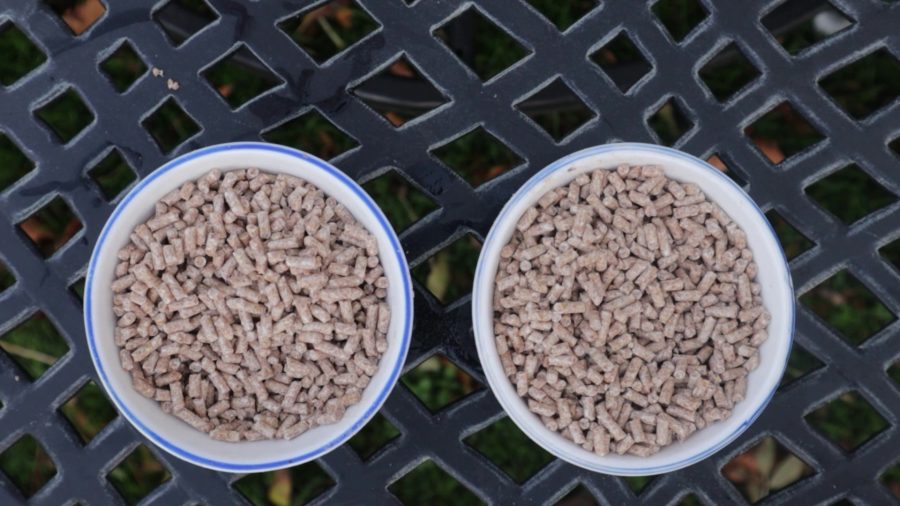Most of us with chickens aren’t experts in nutritional needs for ourselves, let alone for our chickens. Fiona and Hugh Osborne explain how they balance the nutritional needs of their breeding flock of Orpingtons.
The backbone of any nutritionally balanced diet for our flock is a good quality pelleted chicken food that is suitable for our mix of chickens.There are many quality brands on the market including Heygates, Allen & Page and Marriages amongst others; this list isn’t exhaustive. All of them have spent great amounts of money on both developing and quality controlling their feeds so they take the heavy lifting and guesswork out of the selection for us. We mentioned that we also choose a food that is suitable for our mix of chickens.
As breeders, this changes month by month. You might be surprised to hear that we do not use the most common pelleted food which is Layers Pellets. We like our chickens to have access to the entire free-range area. That means we have chicks with their broody hens mingling with the laying hens, mingling with the cock birds, all of which have different nutritional needs.
To allow the varied mix of chickens to run together, we select two mixes of food.The first is when chicks start hatching and we fill the communal feeders with food suitable for chicks. Essentially, we are feeding to the youngest flock member, after all, chicks can’t eat adult pellets (growers’ or layers’) but adult hens and cockerels can eat chick food. You might notice that I’m using the term ‘chick food’ rather than ‘chick crumb’ and that’s because we’ve found a feed company called Duffields based in Norfolk. They make a micro-pellet which is suitable for large fowl chicks.
Chick crumb can be very messy, as adults and chicks accidentally throw the crumb out of feeders. To prevent a slimy sludge of chick crumb appearing around the feeders when it rains, the discarded crumb needs regularly cleaning up. Micro-pellets, as they are very small pellets, are less likely to cause a mess and the chicks love them.
Once the youngest members of the flock are six weeks old and able to cope with eating pellets the size of adult pellets, we switch to growers’ pellets. The one member of the flock that is missing nutrition at this stage are the laying hens and the key ingredient they need more of is calcium. We provide a coarse oyster shell which they access to give them the additional calcium. Chicks cannot eat it as the size of the oyster shell pieces are too large for them to consume. This mix also works for the cock birds as too much calcium can cause kidney damage.
TREATS
We love to give the chickens treats and I’m sure you do too. It’s a great tool to encourage friendly behaviour, bringing the flock to us. The only problem is that most treats are not nutritionally balanced in the same way as our core food pellets. We partly offset this by giving the main treats for the flock around one hour before roosting. That way the team fill up on nutritionally balanced pellets and have treats as a ‘dessert’ late in the day.
This article extract was taken from Practical Poultry in the Spring 2024 edition of The Country Smallholder. To read the article in full, and hear more from Hugh and Fiona about chicken nutrition, you can buy the issue here.
To receive regular copies of The Country Smallholder magazine featuring more articles like this, subscribe here.
For FREE updates from the world of smallholding, sign up for The Country Smallholder newsletter here.








